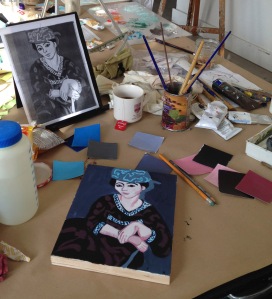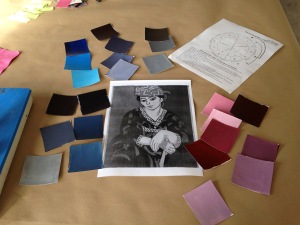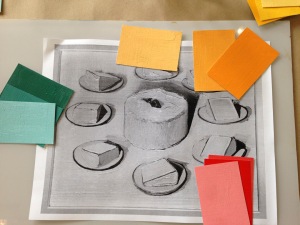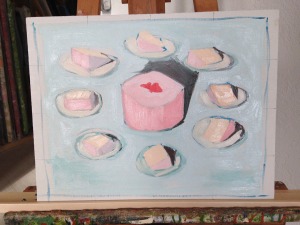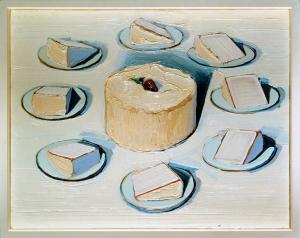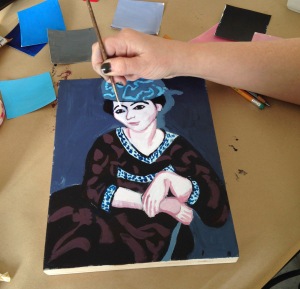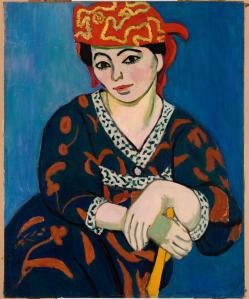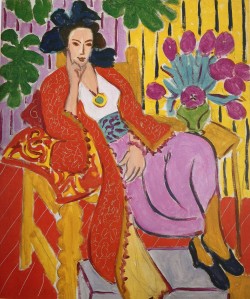For our Color Boot Camp final project, each student picked a black-and-white reproduction of a masterwork and imposed their own color scheme on it, repainting the image in the same values with new colors. Anne chose an analogous color scheme for this Matisse: Red violet, violet, and blue-violet, adjacent colors on the color wheel. The swatches we’d made earlier came in handy for everyone to see what they had to work with:
The rules were that you had to use one of your previously mixed limited palettes, match the light-dark relationships on the original, and confine yourself to one of three standard color schemes: complementary (e.g., red & green & whatever neutrals you can mix from those two), split complementary (e.g., red, blue-green, yellow-green, and mixed neutrals), or analogous (see above)
Another student covered Wayne Thiebaud, using a split-complementary scheme of green, red-orange, and yellow-orange:
No one was allowed to look at colored pictures of the original until they were done.
Here’s her version of “Around the Cake” with Wayne’s own on the right:
And below left, Matisse by Anne, and right, Matisse by Matisse. Matisse showed uncharacteristic restraint with his triadic scheme of the three primaries.
In many of his later paintings, one can only classify the color scheme as “All of Them.” (We’ll try that one in Color Boot Camp III perhaps.)
